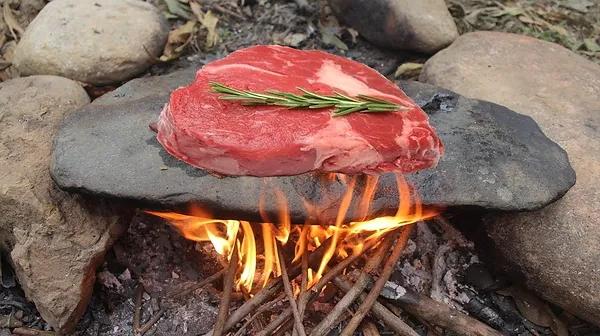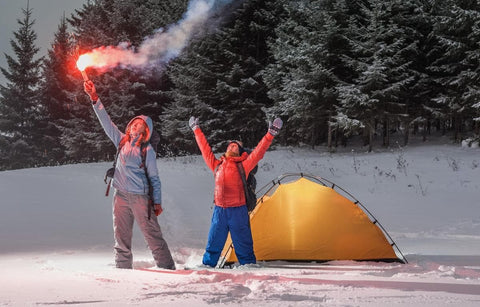Survival myths have a way of embedding themselves in our minds, passed down as if they’re unshakable truths. The problem? Many of these so-called “lifesaving” tips are not only wrong but downright dangerous in a real emergency. We’re looking at 25 common survival myths that could lead you astray, and offering more practical, proven strategies to keep you alive and well when it matters most.
25. Neglecting Water

When it comes to survival, water is the undisputed MVP. The human body needs 2-3 liters a day just to function properly, and losing even 2% of that can degrade your performance. Dehydration becomes a real threat within 24 hours and can be fatal in as little as three days. Meanwhile, humans can survive weeks without food. Staying hydrated is non-negotiable, so always make finding and conserving water your top priority when you’re out in the wild.
24. Running From Twisters

Tornadoes are fast, unpredictable, and dangerous to outrun. They can move at speeds up to 60 mph and change direction without warning, making immediate shelter your safest bet. Head for a basement or interior room if you can—this provides better protection than trying to flee. If shelter isn’t an option, lying flat in a ditch while shielding your head can reduce your risk of injury. Knowing where to go and how to protect yourself can make all the difference.
23. Following Moss

If you’ve heard that moss only grows on the north side of trees, it’s time to let that one go. Field research has shown that moss grows based on conditions like shade and moisture, which can vary wildly depending on the environment. Instead of relying on this unreliable myth, stick to a good old-fashioned compass—it’s accurate in all kinds of weather. Better yet, combine multiple natural navigation techniques to keep yourself on track.
22. Drinking To Stay Warm

That “warming” feeling from alcohol on a cold night? It’s a lie. Drinking alcohol causes your blood vessels to expand, which actually increases heat loss from your core by up to 50%. You might feel warm, but your body is cooling down fast. The real key to staying warm is layering up with synthetic or wool materials, which keep you insulated even if they get wet. Shelter and heat conservation are your best friends in cold-weather survival.
21. Gas Panic

If you smell gas, stay calm and find the easiest way to ventilate the area. The safest move? Open windows to ventilate the area – you’ll reduce explosion risks in just a few minutes. Once the air is clearing, evacuate calmly. Following these steps can prevent most gas-related accidents, so take a breath, follow the process, and get to safety.
20. Drinking Seawater

Drinking seawater is a fast track to dehydration, not hydration. Its 3.5% salt content forces your kidneys to use more water than it provides, leaving you worse off. Instead, focus on creating fresh water with tools like a solar still, which can produce up to 2 liters a day. Combined with proper signaling and rationing your existing water, these tactics can extend your survival time.
19. Shocking Frostbite

When it comes to frostbite, a gentle approach is key to saving damaged tissue, not a hard shock of heat. The best way to warm up frostbitten hands or feet is by soaking them in water heated to 104-108°F (40-42°C)—warm enough to help but not so hot it causes more harm. Avoid rubbing or moving the affected area, as that can destroy fragile cells already damaged by the cold. And don’t wait too long—getting professional medical help within six hours gives you the best shot at a full recovery.
18. Fire First?

In the wild, exposure is a silent killer, claiming lives faster than hunger or thirst ever could. Wind can strip away body heat 10 times faster than still air, and rain? It doubles that cooling effect. Building a quick shelter, like a lean-to, should be your first move if you have any doubts about the weather staying pleasant—it blocks the wind and rain, giving you a solid base to work on building a fire and tackling other survival needs. Without shelter, even the best fire won’t keep you safe for long.
17. Raw Meat

Eating raw meat might sound like a quick solution to hunger, but it’s a gamble you don’t want to take. Studies show that raw meat is teeming with bacteria. Couple this with the fact that foodborne illnesses can sap your energy four times faster than hunger ever would, and eating raw meat isn’t the move to make. Cook your meat properly.
16. Finding Water

Finding water in the wilderness is easier when you know where to look. Water naturally flows downhill, so valley bottoms and drainages are great starting points. Healthy deciduous trees are also a good sign—consistent groundwater is likely nearby. And if you spot game trails heading downhill, there’s a good chance they’re leading to a water source. Nature leaves plenty of clues; you just need to follow them.
15. Clear, Running Water

Crystal-clear streams and ponds might look drinkable, but don’t be fooled—most wilderness water is teeming with harmful organisms. Drinking untreated water can lead to serious illness, so proper treatment is essential. A combination of filtration and chemical purification is your best bet to remove pathogens while keeping those beneficial minerals intact.
14. Solar Still Solutions

A solar still might sound like a lifesaver, but don’t rely on it alone. Even under perfect conditions, a single still will produce around 2 liters of water a day—which may not be enough to meet survival needs. The real trick is to use solar stills as part of a larger strategy. Combine them with active water collection methods, like capturing rainwater or finding natural sources, and practice strict water conservation to stretch your resources as far as possible.
13. Just Boil It?

Boiling water is one of the simplest ways to make it safe to drink, but timing matters. Once your water hits 185°F (85°C), it’s technically safe, but bringing it to a rolling boil for one minute adds an extra layer of safety. If you’re at higher elevations, you’ll need to boil it longer—three extra minutes for every 5,000 feet above sea level. It’s an easy habit to master and can make all the difference when clean drinking water is hard to come by. Remember to filter your water afterward, if possible.
12. Cave Fires

Building a fire in a cave will give you warmth and a way to start cooking, but it’s not without risks. Fires in enclosed spaces can quickly fill the air with dangerous carbon monoxide, often reaching unsafe levels within 30 minutes. To stay safe, position your fire about 10 feet from the cave entrance. This keeps the heat where you need it while allowing for proper airflow to clear out the smoke and harmful gases.
11. Gators

Alligators may be intimidating, but there’s good news: they aren’t built for long-distance chases. On land, an adult alligator can hit speeds of 11 mph, but they tire out after about 30 feet. If you need to escape, a straight sprint is your best bet. Better yet, avoid getting too close in the first place—staying at least 50 feet from the water’s edge drastically reduces the chance of an encounter with these prehistoric predators.
10. Sucking Out The Venom

Trying to suck the venom out of a snakebite might sound heroic, but it’s a recipe for disaster. Medical studies show that suction, whether by mouth or device, just isn’t effective. Worse, it can damage tissue and lead to serious infections. The best move? Keep the victim still and get them to a hospital as quickly as possible. Forget the cowboy tricks—this is one situation where modern medicine is your best bet.
9. Wandering

When you’re lost, staying put can be the smartest move you make. Survivors are often found within a mile of where they were last seen, and teams locate stationary survivors faster than those who wander. Letting someone know your plans before heading out also gives rescuers a major advantage. Of course, if bad weather is heading your way or you spot a landmark within about 100 yards, careful movement may be necessary—but wandering aimlessly is almost always a bad idea.
8. One Signal Method

When it comes to signaling for help, the more methods you use, the better your chances. Field tests show that mirrors can reflect sunlight for miles, while smoke signals are ideal in clear weather with the right vegetation. Combining visual signals, auditory cues (like whistles), and ground markers is ideal, if you can manage it. Each method you stack on top of another helps make you more visible, and therefore, more likely to be rescued.
7. Fight, Flight, and Playing Dead

When it comes to bears, how you react depends entirely on the species. Being loud, imposing, and acting aggressively will often scare away black bears. If you’re attacked, however, do not play dead – fight back, and fight hard. Grizzly bears, on the other hand, are known to be territorial. If you’re attacked, playing dead can help reduce the risk of serious injury and death – but you need to stay on your stomach to avoid being turned over. Keep your legs spread out enough to resist being rolled over. Bear spray and bear guns are also effective deterrents, though both carry obvious risks.
6. Rubbing Some Dirt In It

Injuries in the wild can escalate quickly without proper care. Infection risks only increase for every hour a wound goes untreated. The solution is simple: clean the wound immediately, even if it doesn’t look dirty, and cover it with sterile materials. In wilderness conditions, this basic care reduces infection rates and buys you precious time to find additional medical help if needed.
5. Snow For Water

Eating snow might seem like an easy way to hydrate, but it’s a bad idea. Your body has to burn precious energy to melt it and warm it up to body temperature—about 37 calories for every handful. In a survival situation, that’s energy you can’t afford to lose. Instead, melt the snow in a container over a fire (using body heat is also possible but obviously much less recommended.) This way, you conserve energy while still getting much-needed water.
4. Ditching Your Car

It turns out, your car is one of the safest places to be during a lightning storm. Modern vehicles are designed to disperse lightning strikes with almost perfect efficiency. The metal frame acts like a shield, channeling the strike safely around the passenger compartment. Data shows that people in vehicles survive lightning strikes more often than those caught outside. So, if a storm’s brewing, your best bet is to stay in the car and let it do its job.
3. Running Water

Clear, running streams of water might look safe to drink from but don’t be fooled—moving water can carry an incredible amount of waterborne pathogens and parasites. The good news? Boiling eliminates nearly all of these pathogens in just a few minutes, making it a reliable way to ensure your water is safe. With the right filtration and treatment, running water becomes a safe hydration source.
2. Who Needs A Tourniquet?

Stopping bleeding doesn’t always mean reaching for a tourniquet. Sometimes all you need is simple pressure on a wound or a basic bandage. But for serious bleeding, immediately applying a tourniquet will save lives. The key is placement—secure it about two inches above the wound site to stop the bleeding without causing unnecessary tissue damage. It’s also important to remember that tourniquets are not fun; you’re stopping the flow of blood to an area, with all the negatives that invites. Make sure you mark the time you applied a tourniquet on a tag with the tourniquet, as medics can use this information to know if the limb has been deprived of blood for too long.
1. Hurricane Winds

When it comes to hurricanes, water—not wind—is the deadliest threat, accounting for a significant share of fatalities. If you’re outside the evacuation zone, properly reinforced homes can withstand fairly strong hurricane conditions. But if evacuation orders are in place, leaving early is crucial. Emergency data shows that early evacuation significantly increases survival rates compared to waiting it out in unsafe locations. The takeaway? Listen to the experts, act early, and stay safe.




























